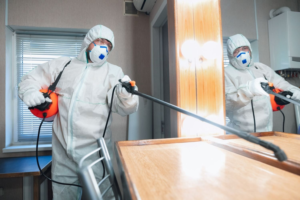Car accidents can have a profound impact on victims. In addition to physical injury and property damage, victims often face financial hardship due to medical expenses, lost wages, and car repair costs.
Insurance companies frequently ask questions that are designed to catch you in a lie or get you to admit fault. An experienced attorney can recognize these tactics and protect you from saying anything that could hurt your claim. Contact Car Accident Lawyer Duluth now!

Car accident lawyers know how to handle cases with multiple parties and how to build a strong case for their clients. They also understand local laws and processes and can help their clients navigate them. In addition, they have experience dealing with insurance companies and can negotiate a fair settlement for their clients. They also have the ability to take cases to trial if necessary.
When determining liability in car accidents, a lawyer examines all of the evidence available to determine which party was at fault. This may include medical records, police reports, and witness testimony. They also use their knowledge of accident reconstruction to establish the facts and prove negligence. They also have a thorough understanding of insurance laws, including the nuances of insurance policies and coverage limits. They also have the skills to negotiate a reasonable settlement with the at-fault party and their insurance company.
They can help victims receive maximum compensation for their losses, such as medical bills, property damage, and lost wages. They can also help victims with other non-economic damages, like pain and suffering. The severity of a victim’s injuries will also influence the value of their case. A lawyer will ask detailed questions about the nature of a client’s injuries and will consider the impact that they have had on his or her life.
A lawyer will also explore options for obtaining additional compensation, such as uninsured or underinsured motorist coverage. They can also help clients get a fair deal from auto manufacturers and parts suppliers, who are sometimes at the root of crashes caused by defective equipment.
If the at-fault driver does not have sufficient insurance coverage to cover the victim’s losses, a car accident lawyer can file a lawsuit against him or her. Depending on the complexity of a case, the duration of a car accident lawsuit can vary from a few months to a year.
In some cases, a satisfactory settlement cannot be reached through negotiations with the at-fault party or their insurance company. If a lawsuit is needed, an experienced New York car accident attorney can provide valuable guidance and assistance in achieving a fair outcome.
Expertise
Regardless of whether your car accident is a minor fender bender or a devastating head-on collision, you deserve to be compensated for your losses. But it’s important to hire an experienced car accident lawyer to help you maximize the value of your claim. A skilled attorney will know how to assess your damages and negotiate with insurance companies or, if necessary, go to trial to fight for you.
Car accidents happen in a variety of ways and are often caused by someone’s negligence or reckless decisions behind the wheel. The most common car accident types are rear-end collisions, sideswipe crashes, and rollovers. Other factors that contribute to vehicle accidents include drunk driving, distracted driving, and dangerous road conditions, such as potholes, snow or ice.
When you have been injured in a car accident, your first priority is to seek medical attention for any serious injuries. However, you also need to protect your legal rights by taking the right steps after a crash, including reporting the accident to law enforcement and documenting evidence. It’s essential to exchange contact information with the other driver and take photos of the accident scene if possible. Then, you should contact an experienced car accident injury lawyer as soon as possible to review your case.
The experience of your NYC car accident attorney can have a significant impact on the success of your case. An experienced attorney can provide the best advice regarding your next steps and will have a track record of successfully representing clients with similar claims. They will be familiar with the local courts and judges and may be able to work more efficiently than someone less familiar with the area.
A qualified car accident injury lawyer will be able to assist you in recovering compensation for your medical bills, property damage, lost current and future wages, pain and suffering, and wrongful death damages. While every state has different laws about what kind of damages accident victims can pursue, there are some general guidelines. The severity of your injuries will also have a major impact on the total amount of your settlement, which is why it’s essential to consult with an experienced New York car accident lawyer as soon as possible after your accident.
Reputation
Car accident injuries are among the most common types of personal injury claims. However, receiving full and fair compensation from the insurance company may prove difficult without legal representation. As such, it is essential to work with a skilled car accident lawyer who understands the intricacies of the law and knows how to deal with aggressive insurance adjusters.
The law firm of Mirman, Markovits, & Landau PC has extensive experience representing clients in auto accident cases. The firm has a staff of experienced lawyers and investigators who can assist with your claim. In addition, the firm is available 24/7 to provide legal assistance.
Distracted driving is one of the leading causes of car accidents in New York City. This type of negligent behavior can include talking on the phone, texting, and other activities that take your focus away from the road. In the event of a car accident, distracted drivers can cause severe injuries to other people on the road or even death in serious situations.
Despite advances in car technology and improved safety features, thousands of people are injured in motor vehicle accidents each year. Many of these crashes result in significant medical expenses and lost wages for the victims. In addition, some of these accidents may lead to permanent and debilitating injuries, such as head and spinal trauma.
The Rothenberg Law Firm LLP has been assisting car accident victims in New York City for over 50 years. The firm’s attorneys investigate the cause of the crash and mediate with insurance companies to obtain fair restitution for their clients. The firm handles a wide range of car accident cases, including those that involve drunk driving, collisions between vehicles and pedestrians, or commercial vehicles.
A reputable and effective car accident attorney should be able to prove that his or her client was not at fault for the accident. It is also important for an attorney to have the skills and resources to take a case to trial if necessary.
A good car accident lawyer should have a strong reputation in the community and be well-known in the field of personal injury law. In addition, the attorney should have a solid track record of success and should be willing to put his or her experience to work for clients.
Fees
Car accident victims face many financial challenges in the aftermath of an accident, from medical bills to lost wages. They often don’t think about the cost of hiring a car accident lawyer, but these professionals can help you get the maximum settlement for your case. A reputable lawyer will charge reasonable fees that are fair and reflective of their experience, skills, reputation, and resources.
Fees charged by a car accident lawyer vary depending on the circumstances of the case and how complex it is. Most injury attorneys work on a contingency basis, meaning they are paid a percentage of the compensation they secure for their client. This model aligns the interests of both parties and allows injured people to hire a lawyer even if they do not have the money to pay for one upfront.
While contingency fees are the most common, there are other ways that an attorney may charge for their services. For example, some attorneys charge a flat rate, while others charge an hourly fee. Some lawyers also cover certain costs throughout the course of the case and deduct those expenses from the final settlement.
The total cost of a car accident lawsuit depends on many factors, including the severity of the injuries and property damage. An experienced car accident lawyer will be able to accurately calculate your damages and ensure that you are compensated for all of your losses. They will also be able to negotiate with the at-fault party’s insurance company and represent you in court if necessary.
A reputable lawyer will provide you with a written contract that details all the fees associated with your case. This will help you avoid any surprises when it comes time to settle or win your case. It is also important to note that the amount of time that a lawyer spends on your case can impact the overall fees. For example, if your case is particularly complex and involves expert witnesses, you will likely incur more legal fees than a straightforward personal injury case. This is why it’s important to choose a car accident lawyer with a solid track record of success in similar cases.


